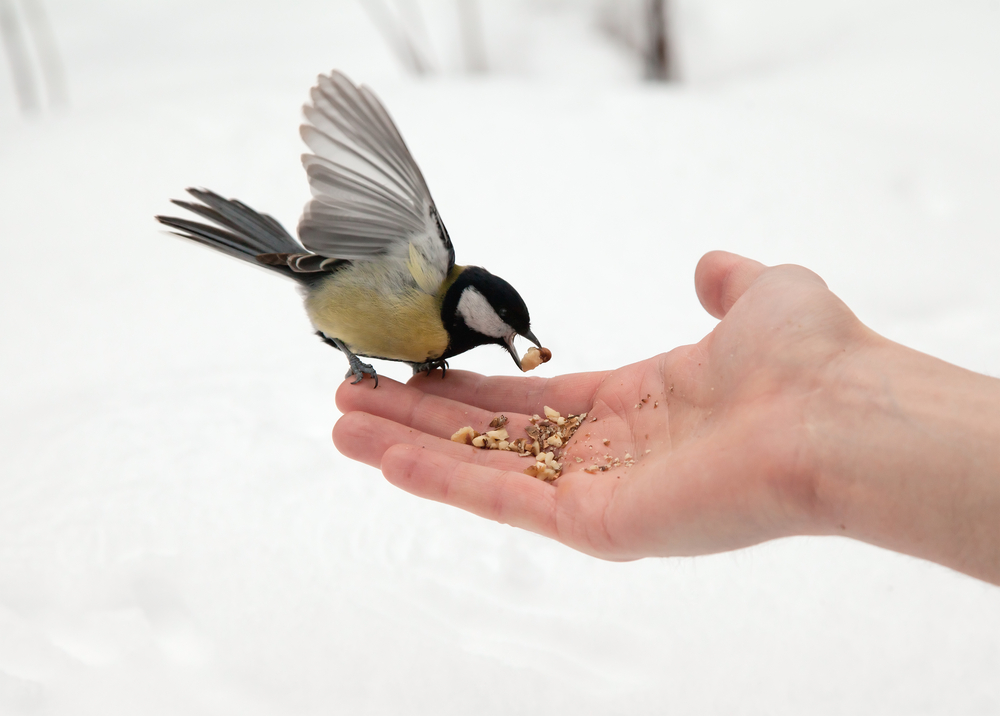This Thursday, January 5th, is National Bird Day, so let’s talk about feeding them. Because there aren’t many insects available over the winter, most of the birds that winter here are seed eaters. Some seeds are better than others, however. Seeds and nuts with a higher fat content are best for winter feeding—black oil sunflower seeds and even peanuts.
You can use bird seed mixes but do read the ingredient label and try to avoid too many fillers like red millet and wheat. A good mix should contain black oil sunflower seeds, white millet, even cracked corn and/or peanut bits. Remember, too, black thistle seed (Niger) to attract goldfinches.
Suet, rendered beef fat, is a great energy source. You can buy prepared suet cakes or make your own and add bird seed, chopped peanuts, etc. To make your own, ask the meat department at your local grocery store if they have leftover beef fat trimmings you can “melt” down. Here is a suet cake recipe from the Audubon Society:
Homemade Suet Recipe
- 1 ½ cup palm oil-free shortening or melted beef fat
- ¾ cup peanut butter
- 3 ½ cup bird seed
- 1 cup quick oats
- ½ cup corn meal
Melt shortening and peanut butter together and pour over dry ingredients. Pour into ice cube trays and freeze for an hour or two. Great for winter feeding—do not use when temps are over 50 degrees, however.
Other Ways of Feeding Birds in the Winter
Birds need the moisture content and vitamins they find in various fruits, so place aluminum pans filled with chopped grapes, apple tidbits, banana or orange slices—even chopped raisins which have been soaked in water first. Fruit will attract a wider variety of birds. Wash fruit carefully or buy organic to minimize pesticide residues.
If you don’t have anywhere to hang a birdfeeder, you can smear peanut butter on a tree trunk and press peanut bits or cracked corn into it. I have done that before and enjoyed watching the woodpeckers go after it.
If you’re thinking long term bird-feeding, there are trees and shrubs like winterberry holly, American Beautyberry, Inkberry, Wax Myrtles, Sweet Bay Magnolia or viburnums which have winter fruit/berries. Native plants, in particular, are beneficial. For more information, visit www.audubon.org.
It’s also good to provide a ready water source—a heated birdbath or pond with running water so they don’t freeze.
We have a nice selection of bird feeders, etc. so come in and check them out.

